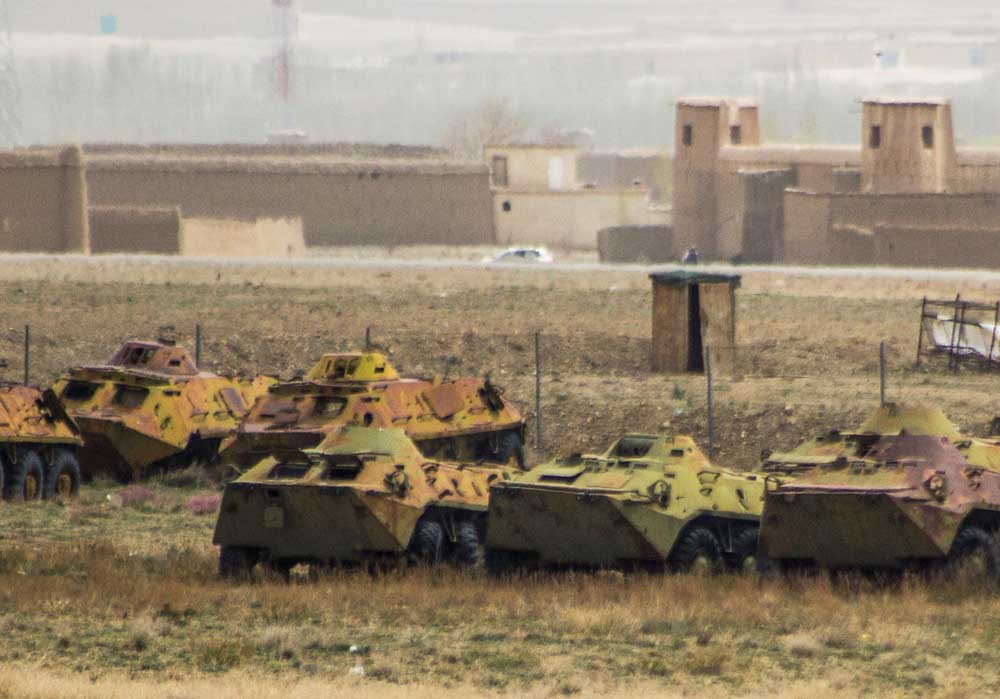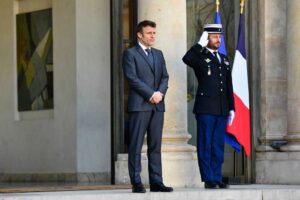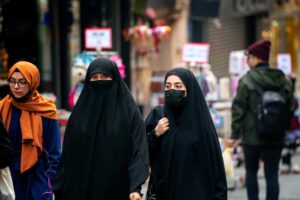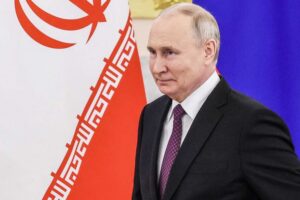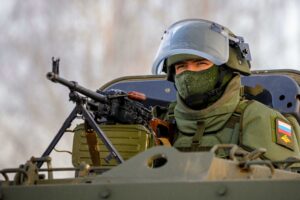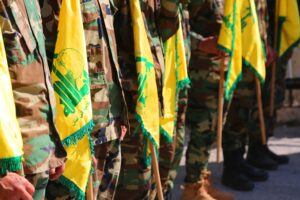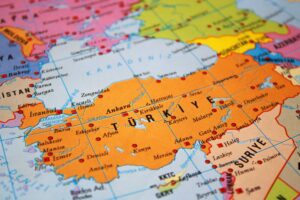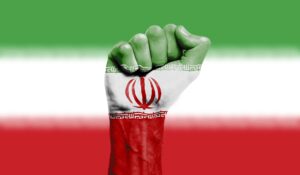The Biden administration’s withdrawal from Afghanistan, and subsequent collapse of the Afghan government, enables a broader reassessment of America and Western approaches to counterinsurgency, national reconstruction, and Middle East policy. The tyranny of extant paradigms prevents a grasp of political reality, and throughout NATO involvement in Afghanistan, precluded the ever-elusive “political settlement” that would incorporate the Taliban into Afghan politics. In reconstructing Afghanistan, the US and its allies never grasped the nature of Afghan political culture. Most importantly, they did not understand the role of monarchy in Afghan history and society.
The West must recognise and learn from its Afghan experience, not simply to act more prudently, but also how to conduct long-term social reconstruction more effectively.
Nation-building is now a dirty phrase, twinned with “forever war”, that bizarre description of a long-term military deployment. Nevertheless, the West must recognise and learn from its Afghan experience, not simply to act more prudently, but also how to conduct long-term social reconstruction more effectively. Indeed, absent careful policy, Libya threatens to transform much like Afghanistan, with even more catastrophic consequences for European security.
The US clearly accomplished its initial objective in Afghanistan, the destruction of the Taliban government that sheltered and supported al-Qaeda. Of course, al-Qaeda remains in Afghanistan, and maintains close political, ideological, and familial links with the Taliban. However, until these past months continuous Western force presence mitigated this threat by providing the Afghan military with overwhelming intelligence and airpower advantages.
The deep irony of the current debacle is that, in some meaningful sense, NATO’s mission in Afghanistan did succeed. Terrorist training infrastructure would have existed in the Taliban’s core provinces and parts of Pakistan. But the historical record demonstrates that moderate to minimal Middle Eastern military deployments prevented coordinated operations in the West. IS attacks, while devastating, were planned and conducted in a decentralised manner, and therefore constituted a distinct threat.
The US mission in Afghanistan was not militarily unsustainable. Every American and allied death was a tragedy, but the US lost 6,786 soldiers in the Afghan and Iraq wars, the same losses the British experienced during the Great War every fortnight. The US, moreover, has maintained an all-volunteer force since 1973. There is no lost generation of Afghan veterans, or even veterans from the War on Terror more broadly, in the Western world akin to young Frenchmen and Englishmen after 1918.
Nor was the Afghan mission financially unsustainable. The US spent around $1 trillion over 18 years in Afghanistan, with the majority of the spending taking place in the mission’s early years. In 2019, Social Security spending alone totalled $1 trillion, Medicare $800 billion, Medicaid $613 billion.
However, the Afghan mission was unsustainable, not militarily or financially, but politically. Pakistan’s support for the Taliban prevented the group’s destruction. Despite repeated tactical and operational reverses, Taliban fighters could retreat to Pakistan and regroup. Hence the emphasis on an “inclusive political settlement” under which the Taliban would participate in Afghan democracy. But the Taliban would never accept this settlement. They were convinced that the post-2001 Afghan government was illegitimate, and would collapse without foreign support, a view recent events have confirmed.
The issue is not a supposed incapacity for democracy. Afghans lack an explicitly democratic history, as did Germans and Japanese in 1945, and the overwhelming majority of Europe before the late 18th century. Nevertheless, in one manner or another European and Middle Eastern societies developed parallel traditions of deliberative decision-making, particularly at the local level.
The Northern European thing, an assembly of all free males, is remarkably similar to the shura of Islamic law, and the loya jirga of Pashtun tradition. All are traditional assemblies, called periodically to discuss critical communal issues, in the Pashtun context typically to select new leaders or resolve tribal feuds. The first recognisably Afghan states, the Hotaki and Durrani Empires, called loya jirgas throughout the 18th century. Afghanistan’s Barakzai monarchs did the same in the 20th century. Amanullah Khan called three during his ten-year reign. Mohammed Zahir Shah, Afghanistan’s last king, used the loya jirga as the basis for constitutional democracy.
Rather than contradicting democratic representation, the Afghan monarchy is historically inseparable from it. Like any tribal society, Afghanistan is a patchwork of ethnically affiliated smaller political units. Afghan society is varied: while Pashtuns (42 percent) and Tajiks (27 percent) form a majority, dozens of smaller ethnic groups exist, each with their own tribal and inter-ethnic dynamics. Uniting this society requires not simply a legal political institution, but a cultural one that taps into Afghan history and tribal representation. That institution in Afghanistan is the monarchy, the only form of rule that successfully united Afghanistan absent foreign support.
In particular, the House of Barakzai still plays a central role in Afghan political consciousness. The Barakzai secured Afghan independence from British suzerainty, and henceforth served as the guardian of Afghan sovereignty. Mohammed Zahir Shah ruled Afghanistan for four decades, successfully defeating rebellions in the late 1940s, and creating a democratic constitution in 1964. This constitution was the culmination of decades of reforms, only made possible through the Barakzai’s intimate connections with Afghan ethnic groups and tribes.
Indeed, intra-royal infighting led to the 1973 coup – the autocratic Mohammed Daoud Khan was an Afghan prince, and used his connections to oust Mohammed Zahir Shah. Barakzai rule was imperfect. But the monarchy as an institution represented the potential of Afghan statehood, and provided Afghans with the longest continuous period of stability in the country’s history.
Hamid Karzai and Ashraf Ghani repeatedly emphasised their monarchical connections, Karzai through his family’s political activity before 1973, Ghani through his admiration for Amanullah Khan’s reforms.[1] Karzai likely conceived of himself as a monarch, per his 2002 coronation ceremony resembling that of 18th century king Ahmad Shah Durrani.[2] But despite their monarchical rhetoric and Pashtun ethnicity, neither president could entice the Taliban to negotiate legitimately for reconciliation, nor provide an alternative point of national identification.
There was an opportunity for Afghan monarchical restoration. Mohammed Zahir Shah returned to Afghanistan in April 2002, two months before the loya jirga was scheduled to select a transitional administration. Public support existed for monarchical restoration, although Zahir Shah stated that he would accept any decision the Afghan people made, and rejecting the title of king. However, the United States forced Zahir Shah to renounce his claims, clearing the way for the US-backed Karzai.[3]
Karzai’s nepotism spoiled the situation, creating an unpopular oligarchic political structure that alienated the population, and bolstered the Taliban’s support. A restored Zahir Shah, even in a largely ceremonial capacity, would have been able to resist these trends, and provide Afghans with a legitimate pole of political loyalty.
***
Policymakers will be confronted with the results of Biden’s withdrawal for the next decade, as the Taliban gravitates towards China and Russia.
In Afghanistan, events far outpaced the West’s ability to act. Policymakers will be confronted with the results of Biden’s withdrawal for the next decade, as the Taliban gravitates towards China and Russia, and al-Qaeda and other jihadist groups return to the country.
However, simple geography limits the damage Afghan-based terrorist groups can do, or the dangers of another Afghan civil war. The same cannot be said with Libya, a country only 300 miles from Europe, and with Russian and Turkish military presence. Formally, the Second Libyan Civil War is over. Nevertheless, Libya’s internal factions cannot agree on a new constitution, nor on an election schedule absent a constitutional settlement.
Gaddafi ruled Libya through a mix of fear and tribal favouritism. Since his death, no faction has commanded sufficient support or acted with sufficient skill to recreate this system. But much like Mohammed Daoud Khan in Afghanistan, Gaddafi replaced a popular constitutional monarchy. The House of Senussi played a remarkably similar role in Libya to the Barakzai in Afghanistan, defending Libya against French, Italian, and British colonialism, and then alongside the Allies against Nazi Germany and Fascist Italy. And much like in Afghanistan, the Senussi remain popular amongst the Libyan people, with their 1951 constitution held as a model that balanced Islamic identity and monarchical power with democratic representation and individual rights.
The US and its allies have multiple options in Libya, much as they did in Afghanistan. The danger, however, is that after the Afghan experience, NATO will ignore the Libyan situation, fearful of resuming a nation-building mission. But the West can play a decisive role if, through the Libyan monarchy, it facilitates the conditions for legitimate national dialogue that can heal the wounds of two civil wars and four-decade functional dictatorship.
If the West chooses inaction, another bloody fracture is likely, given the friction within Libyan society. Another spiralling civil war on Europe’s doorstep will intensify intra-NATO and great-power competition, trigger a new refugee crisis, and provide jihadists with a launchpad for attacks against Europe. Afghanistan demonstrates the dangers of culturally insensitive over-involvement. However, if we may draw any lesson from NATO’s 20-year mission, it is that prudence demands engagement, not wilful blindness.
[1] Ghani continued his appeals to Amanullah Khan’s legacy throughout his presidency. See “King Amanullah Khan’s Dream Was A Free, Independent & Stable Afghanistan: President Ghani”, Afghanistan Ministry of Information and Culture, 17 August 2019, accessed via: https://moic.gov.af/en/king-amanullah-khan%E2%80%99s-dream-was-free-independent-stable-afghanistan-president-ghani. See also George Packer, “Afghanistan’s Theorist-in-Chief”, The New Yorker, 4 July 2016, accessed via: https://www.newyorker.com/magazine/2016/07/04/ashraf-ghani-afghanistans-theorist-in-chief.
[2] Amy Waldman, “A Nation Challenged: Politics; In Rite of Past, Afghans See a Way to Forge a Future”, The New York Times, 8 Janaury 2002, accessed via: https://www.nytimes.com/2002/01/08/world/a-nation-challenged-politics-in-rite-of-past-afghans-see-way-to-forge-future.html.
[3] This is an often understated aspect of the post-2001 government formation process. See Jonathan Steele, “Former king renounces throne to save Afghan council”, The Guardian, 11 June 2002, accessed via: https://www.newyorker.com/magazine/2016/07/04/ashraf-ghani-afghanistans-theorist-in-chief. There are allegations of Iranian involvement. See Camelia Entekhabifard, “The people of Afghanistan are paying the price for the regrets of one man”, The Independent, 1 September 2021, accessed via: https://www.independent.co.uk/voices/biden-kabul-taliban-us-withdrawal-b1911697.html.


